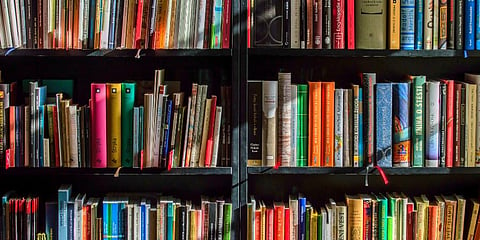

Meena Murthy Kakkar is the Design Head at Envisage Projects, a multidisciplinary firm that offers design and build solutions to various architectural platforms. After a B. Arch from SPA, Kakkar continued her association with the institution by teaching design here since 2008.
She designed the India Post Payments Bank for the Government of India. The Sunday Standard speaks to Kakkar on her reading habits and her overall relationship with the act of reading.
Have your reading preferences changed over the years?
Yes, definitely. I read a lot more fiction in school and college. Now, I alternate between fiction and non-fiction to allow a good change.
What do you like to read?
I prefer reading history as it gives a lot of perspective. As it is with design, history is easy to draw the parallels if one gives context. Today, we are well-connected and aware of the modern world, thanks to the technology we are armed with. What we read nowadays in the news are generally opinion pieces; history helps to connect a path and evaluate them in the current scenario.
What kind of writing do you appreciate and what kind of writing puts you off ?
If it is fiction, I appreciate well-researched writing — the detailing has to be impeccable. Whether in designing or reading, the details stand out and make it impressive. I like reading Amish Tripathi’s books. He manages to draw a lot of parallels from the historical past, making it very compelling. In non-fiction, anything with a different perspective that we don’t get to hear often qualifies for a good read. The history that we read in school textbooks and otherwise are popular pieces that don’t give the whole picture. You need to read a lot of history to understand it completely. Any kind of writing should put things on the table for you to assimilate it yourself mentally and then pass judgment. Writings that are highly opinionated and push you to think only from one perspective, and are not open-ended tend to put me off.
How do you read nowadays?
We are all creatures of habit; unfortunately, a lot of our reading comes from social media, but that does not stay with you very long. Most of the matter that stays with me long after I have read it comes from books or papers.
What is it about the written word that visual and audio mediums cannot fulfil?
When you read a book, paper or article, you have the freedom to go back and forth. The non-linear method of assimilating the written word is what makes it more memorable than any audio or visual medium. Anything visual puts images inside your head and does not leave it for you to figure it out, while audio demands you to be very alert. The world today is already full of sound and visuals, making our heads quite cluttered. Books offer respite from this bombardment and let us read at a pace we want.
Do you maintain a bookshelf or an e-library? Tell us about it.
Yes! I maintain a massive library with over 300-400 books. I definitely prefer reading on paper than on kindle or any electronic devices. The smell of books entices me — Kindle doesn’t give you that personal touch. I arrange my bookshelf according to the genre — History, Political, Mythological, Children’s classic, and so on. I also tend to pick up a Children’s Classic frequently; it is refreshing and light, my last one being Salman Rushdie’s Haroun and the Sea of Stories. Few of my favourite books are The Courtesan, the Mahatma and the Italian Brahmin by Manu S Pillai, and Jaya by Devdutt Pattnaik — both offer a very different version of the history we know.
What attracts you about the presentation of the written word?
I certainly look at the font and spacing. If it is too thin, then it is challenging to read, and turns
into visual clutter. I even tend to look at the book design to some extent, though not entirely; it gives you an idea of what to expect.